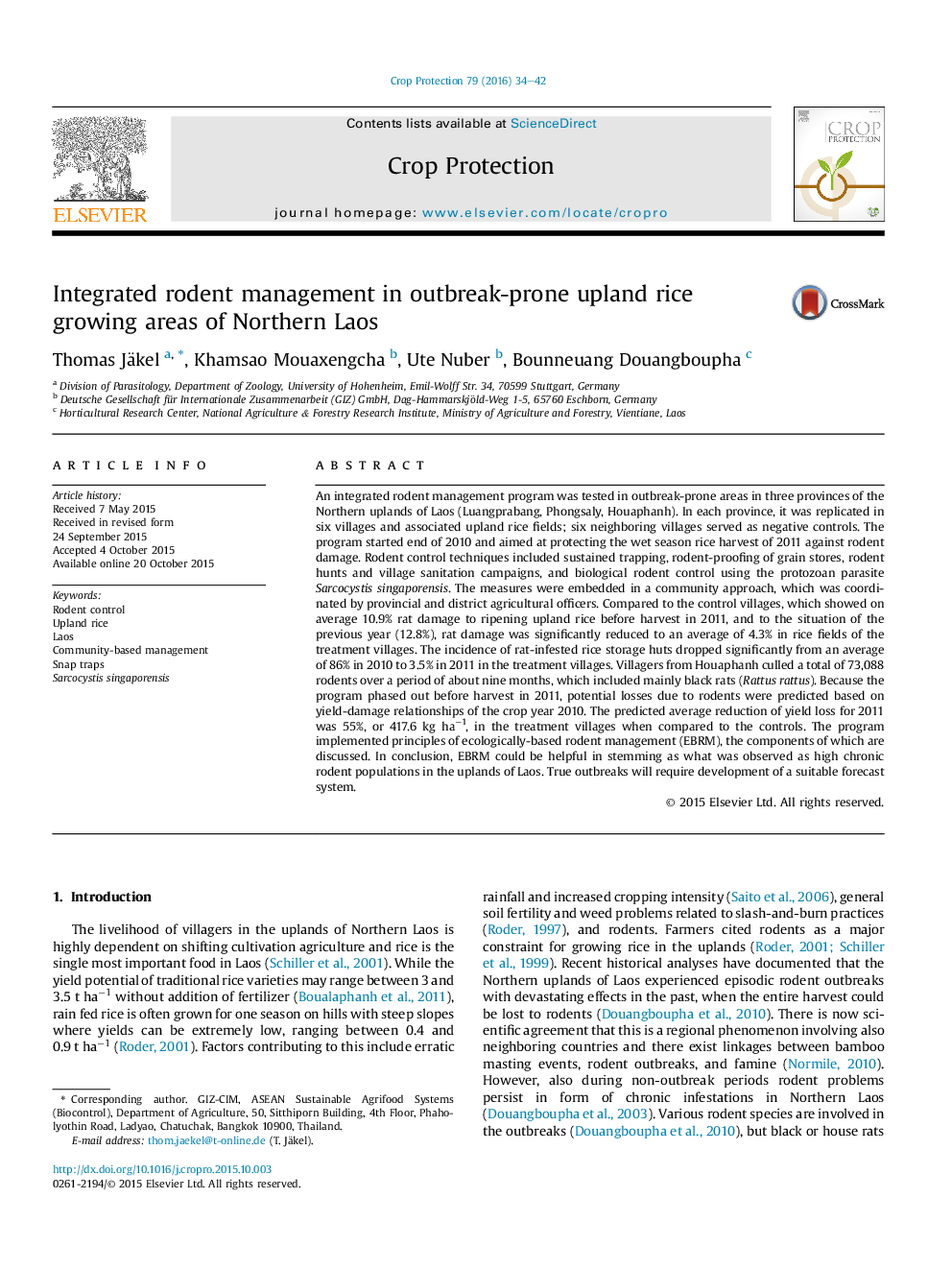| کد مقاله | کد نشریه | سال انتشار | مقاله انگلیسی | نسخه تمام متن |
|---|---|---|---|---|
| 4505610 | 1624308 | 2016 | 9 صفحه PDF | دانلود رایگان |
• We tested integrated rodent management in upland rice growing areas of Laos.
• Methods included trapping, biological control, hunting, and proofing of grain stores.
• The program emphasized community-based management over a period of one year.
• Rat damage was significantly reduced in 16 out of 18 villages if compared to controls.
• Predicted pre-harvest losses of rice were reduced by 55% if compared to controls.
An integrated rodent management program was tested in outbreak-prone areas in three provinces of the Northern uplands of Laos (Luangprabang, Phongsaly, Houaphanh). In each province, it was replicated in six villages and associated upland rice fields; six neighboring villages served as negative controls. The program started end of 2010 and aimed at protecting the wet season rice harvest of 2011 against rodent damage. Rodent control techniques included sustained trapping, rodent-proofing of grain stores, rodent hunts and village sanitation campaigns, and biological rodent control using the protozoan parasite Sarcocystis singaporensis. The measures were embedded in a community approach, which was coordinated by provincial and district agricultural officers. Compared to the control villages, which showed on average 10.9% rat damage to ripening upland rice before harvest in 2011, and to the situation of the previous year (12.8%), rat damage was significantly reduced to an average of 4.3% in rice fields of the treatment villages. The incidence of rat-infested rice storage huts dropped significantly from an average of 86% in 2010 to 3.5% in 2011 in the treatment villages. Villagers from Houaphanh culled a total of 73,088 rodents over a period of about nine months, which included mainly black rats (Rattus rattus). Because the program phased out before harvest in 2011, potential losses due to rodents were predicted based on yield-damage relationships of the crop year 2010. The predicted average reduction of yield loss for 2011 was 55%, or 417.6 kg ha−1, in the treatment villages when compared to the controls. The program implemented principles of ecologically-based rodent management (EBRM), the components of which are discussed. In conclusion, EBRM could be helpful in stemming as what was observed as high chronic rodent populations in the uplands of Laos. True outbreaks will require development of a suitable forecast system.
Figure optionsDownload as PowerPoint slide
Journal: Crop Protection - Volume 79, January 2016, Pages 34–42
